JON KANEKO-JAMES visits King Arthur’s adventures in the Underworld
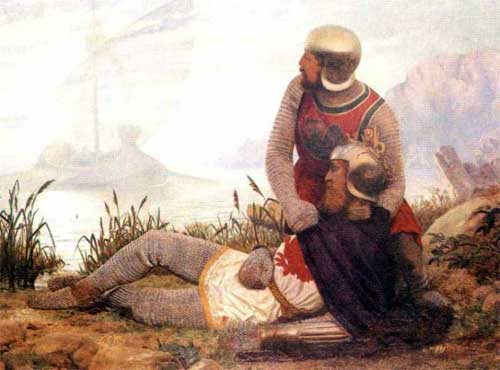
Most of the people reading The Spooky Isles will have an idea who King Arthur is.
Whether you’ve read Le Morte Arthur, or experienced the gentler teaching aid of Bradley James’ torso on the BBC show Merlin, you probably know the basics.
King Arthur’s a hero whose wife sleeps with his best friend, and then he’s killed by kid he made getting with his sister (well… his half-sister, but you can still see why Guinevere decided to explore incest-free relationships).
The standard post-death of King Arthur is well known: he’s taken to Avalon and healed by Morgan/Morgana le Fey. As Geoffrey of Monmouthshire writes in his History of the Kings of Britain, “Then that famous Arthur was mortally wounded, who from there, the river Cam, was taken to the island of Avalon for the healing of his wounds.”
Where is Avalon?
R.S. Loomis points out that the Irish world Ablach means ‘rich in apples’ and is used to describe the island home of Manannan, the God of the Sea. It’s also worth noting that in the Welsh tradition Avallach is the name of Morgana’s father, another possible early link between faeries, Avalon and water (a traditional home of the dead in early European mythology. Godfrey of Viterbo, a German writer, recorded a prophesy form 1190 where King Arthur would be preserved in the depths of the sea and reign as he had on land.)
Glastonbury has also been associated with the sleeping/dead King Arthur. Henry H Payton writes that the association came from a spurious etymology of the word Glastonbury with the eerie fortress of glass mentioned in the poem Preiddeu Annwn.
Monks were even said to have found King Arthur’s tomb at Glastonbury in 1191, reporting that he was a giant with a skeleton covered in nicks and chips as well as the final wound that ended him. Mallory’s Le Morte Arthur even tried to reconcile the two traditions with the already existing folk traditions of Arthur’s return, saying that he would go from the Isle of Avalon to be healed, and that from there he would be buried in Glastonbury until “he shall com agayne, and he shall wynne the Holy Crosse.” An older source, the Black Book of Carmarthen, contains the line, “Concealed till Doomsday the grave of Arthur.”
But this well known tradition isn’t the end for King Arthur. There are a number of folk traditions that make it very clear that the Once and Future King definitely doesn’t sleep…
Season Ticket to the Underworld
Even before King Arthur dies, he’s visited the underworld. In the story of Culhwch and Olwen, the cursed prince Culhwch persuades Arthur to help him get the cauldron of Diwrnach from Ireland. And yes, I wrote ‘Ireland’, not ‘The Underworld’, but Ireland is often used as a metaphor for the Underworld in Welsh myth, with the story of Bran the Blessed having Bran and friends visiting a supernaturally endowed Irish king and coming back after a series of strange adventures. King Arthur’s exploits show a similar ability to walk the borders of death, killing the Black Witch Oddu and harvesting her blood to trim Olwen’s father’s beard.
Even more evocative is the (possibly) 6th Century poem by the Powys-born Welsh poet Taliesin – Preiddeu Annwn, The Spoils of Annwn. This is an eerie poem where the narrator (possibly Taliesin himself, possibly a dead spirit speaking from an otherworldly cauldron) describes King Arthur and a three shiploads of warriors setting off across the Irish sea. They sail past a strange, Lovecraftian fortress made of glass. Whatever their destination, only seven of them – Arthur’s personal retinue – are able to return. This might be because one of them is Gwyn ap Nudd, faerie king of the underworld who is later tasked with controlling the devils of hell.
They retrieve the cauldron, one of a collection of other magical cauldrons in Welsh myth, which will be used to cook Olwen’s wedding feast and thereby kill her father, but it’s the implication of King Arthur as regent over Gwyn that’s important for us: in the Welsh myths Arthur isn’t a King, he’s an Emperor, and Gwyn ap Nudd is a king in his own right, the master of the Welsh version of the Wild Hunt.
This is King Arthur: legendary King who can invade the underworld, take blood from the three fates and steal their cauldron. It’s probably not that surprising that he still gets about a bit after he dies.
King Under the Mountain
Mountains, and the people who dwell underneath them, have been long associated with the dead. Claude Lecouteux talks about this in his book, The Return of the Dead, showing us one of the saga of Thorstein Uxafot, who journeys under a mountain where he sees two companies of twelve warriors lined up: one in red, one in black. These warriors are two forces of the dead, one for good and the other for evil, who need Thorstein to tip the balance in their eternal battle.
In fact, the Icelandic Book of Settlements has an even more explicit linking mountains with the dead:
One night, Björn dreamed that a dweller of the mountains came to him to offer to form an alliance with him, and he heard himself accept this offer. After this, a billy goat came to his nanny goats, and his herd multiplied so rapidly that he became quite rich. After that he was known as Björn of the Billy-Goat. The folk gifted with second sight could see that spirits accompanied Björn to the assembly and Thorstein and Thord when they went hunting and fishing.
If you’d prefer a British scholar, Walter Map shows how King Herla (who we’ll hear more about later) goes from being a living man to a spirit, locked in eternal wanderings after going into the mountain with some strange dwarves:
Invited by a dwarf, King Herla followed him into a cave with his companions. After his host’s wedding celebrations were over, Herla took the return path, heaped with gifts, horses, dogs and falcons. The dwarf led herla out of the cave and gave him a small blood-hound, forbidding any of Herla’s band to set foot upon the ground before this dog leapt down out of the arms of the one carrying it.
Where’s King Arthur in all this? There are plenty of King Arthur stories about being underground too. Gervase of Tilbury visited Sicily in 1190 and reported that Arthur was enjoying life in the depths of the mountain. One of the Bishop of Catania’s grooms was pursuing a runaway horse when he entered the side of Mount Etna. Inside he found Arthur lying on a couch in a beautiful palace, there since his battle with Modred, his wounds breaking out again every year. Gervaise isn’t even the only one who reports this: Caesarius of Heisterbach tells about how the Emperor Henry found the same thing when he conquered Sicily in 1194.
The Eildon Hills on the Scottish borders are also said to be the home of subterranean Arthur. In local folklore, it’s said that he will emerge from the hills along with his entire court when a bugle blast is sounded.
Other British caverns where the late king resides include the site of Sewingshields castle, which was nothing but some walls, vaults and earthworks when early antiquaries visited in 1741. Legends say Arthur slept there, complete with his huge round table and all his knights. In local legends, someone did find a passage to King Arthur’s resting place in the vaults under the ruin, but wasn’t sure of the correct procedure for waking a King.
Along with countless Welsh caves, Richmond Castle is another site associated with Arthur. Folktales talk about a man called Potter Thompson who found the underground halls where Arthur and his men were seated around the fabled Round Table, sleeping. Thomas drew Arthur’s sword, but was too frightened to blow the horn, and fled from the chamber empty-handed. He’s probably lucky compared to those who follow Thomas the Rhymer – a trickster/bard from Medieval ballads – down under the Eildon Hills, because those who try to awaken the king early are shot bodily out of the mountain.
King of the Dwarves
This is a weird one. Arthur is King of the Antipodes, which also makes him King of the Dead and King of the Dwarves.
The Chronicles of the Reign of Stephen, written in 1161, say, “Then the wounded Arthur seeks after the herbs of his sister: these the sacred isle of Avalon contains. Here the immortal fay Morgan receives her brother, attends, nourishes, restores and renders him eternal. The lordship of the antipodes folk is given him…”
Once we’ve washed our brains clean of the implications there, it does look a bit like Arthur has just been made king of Australia, NZ, and lots of other places where people make great movies.
But this is Medieval Britain, and here ‘down under’ has a much more literal meaning. Both William of Malmesbury and Giraldus Cambrensis remind us of Welsh folklore where the Anitpodes are effectively the underworld, peopled by intellectual and magically adept dwarves. In his Itinerarium Cambriae of 1191 Giraldus talks about a priest from Swansea by the name of Eliodorus, who a strange account from when he’d been twelve years old and hiding under a river bank to avoid going to school:
“Two little men of pigmy stature appeared to him, saying ‘if you come with us, we will lead you into a country full of delights and sports.’ Assenting and rising up, he followed his guides through a path at first subterraneous and dar into a most beautiful country, adorned with rivers and meadows, woods and plains, but dim and not illuminated with the full light of the sun…”
Gervaise of Tilbury also wrote about the Antipodes as a subterranean realm in 1211, talking about a swineherd called William Peverell who lost a pregnant sow in Derbyshire:
“He thought within himself whether the sow by chance had entered that famous hole of the Peak, hitherto unexplored… He entered the cave at a time when it was undisturbed by any wind, and when he had long proceeded on his way, he at length came out of the darkness into a bright place, opening onto a wide plain of fields… wondrous to related that he had come from the subterranean folk at harvest, he found winter cold prevailing in our hemisphere…”
Medieval folklorist and literary scholar Claude Lecouteux, along with Regis Boyar, has shown that dwarves were associated with the dead all over medieval Europe. They share the characteristics of the dead in Nordic sagas, including that they vanish at cock-crow, and the sun petrifies them. In the legend of King Sceigdir he follows a dwarf into the mountain, never to be seen again. In fact, in Walter Map’s other great story of encounters with the undead – Hellequin’s Hunt – the dead are partly represented as dwarves with large heads.
And why would Arthur want to become the king of the undead dwarves? To return and save the Britons. In Etienne de Rouen’s Draco Normannicus from 1169 he shows us a fictitious letter where King Arthur says that he will return to battle Henry II with an army of his Antipodean subjects. Another callback to Arthur as King of the Dwarves is a mosaic in Otranto Cathedral, Italy, where he’s pictured riding a goat and waving a sceptre.
Leader of the Wild Hunt
King Arthur doesn’t only live underground. In some British myths, he lives on as a bird, with one Italian visitor to Wales severely admonished for killing a raven on Marazion Green. A possible reason for this is that the Welsh word for raven is bran, the name of Bran the Blessed. It’s probably not a coincidence that some folk traditions confused Bran the Blessed and Arthur: they both go on raids to Ireland, they both spend time on the island of Avalon/Avellach and both are said to be buried somewhere (in Bran’s case, he’s said to be under Tower Hill in London) waiting for the right time to return.
Another Welsh folk hero who appears to have been merged with King Arthur is Gwyn ap Nudd, who we mentioned earlier in the raid on the underworld. Gwyn is the traditional leader of the Wild Hunt in Welsh folklore, and it makes sense that with him being busy guarding the underworld to stop the devils escaping, that his liege (remembering that in Wales, Arthur is an Emperor) might take on some of his responsibilities. It’s said that the sound of horses’ hooves can be heard at night on the road form Cadbury to Glastonbury, a sound that local folklore identifies as the sound of Arthur and his hounds.
Again, Gervaise of Tilbery tells a story of King Arthur leading a band of knights identified with the Wild Hunt. In his Otia Imperiala he writes, “The forest guard whole the common folk call foresters – in other words, the guardians of the hunters’ nets, the game reserves, or the royal woods – recount how they often see on certain days, around noon hour and during the first half of the night, when the full moon is shining, a company of knights hunting, accompanied by the din of hounds and horns. They answer to those who question them that they are the retinue and hounds of Arthur.”
As late as the 16th Century there is still mention of King Arthur leading the Wild Hunt, with the Complaynt of Scotland including the line, “Arthour knycht he raid on nycht/With gyltin spur and candil lycht.”
Still Receiving Guests
Finally, let it not be said that King Arthur isn’t hospitable in death. Peter de Roche, the Bishop of Winchester in 1216, wrote an entry in the Lanercost Chronicle talking about how he’d happened upon a mansion where he was entertained by King Arthur, who gave him proof of their evening together by endowing him with the power to produce a butterfly any time he wishes by closing his first. In the poem, Le Bastard de Bouillon from around 1350 Baudouin learns the route to Faerie and is greeted by King Arthur and his sister, spending five years in a garden where a thousand days disported themselves for their pleasure.
In fact, Arthur can be a downright insistent host. Caesarius of Heisterbach writes about an incident in Sicily in 1194: Emperor Henry VI’s servant met the Bishop’s servant who had journeyed underground in the story I mentioned earlier. He asks the retainer to take a note from Arthur to the Dean of Palermo, summoning him to appear at King Arthur’s court in a fortnight. The sceptical dean mocks the invitation, dying precisely fourteen days later, thereby joining the king in the Otherworld.
So we can see that Arthur has almost a more full life after death than he had when he was drawing breath. He is the receiver of intrepid travellers, King of the Dwarves, granter of magical powers and leader of the wild hunt. Why believe all this? Why did the Britons believe so strongly in the return of King Arthur that William of Newburgh wrote, “…they expect Arthur to come again and cannot endure to hear of his death?” Perhaps it’s something to do with the other name he’s given, not just “The Once and Future King”, but “The Hope of the Britons”.
King Arthur was one of 10 Greatest English Folklore Characters You Need To Know.

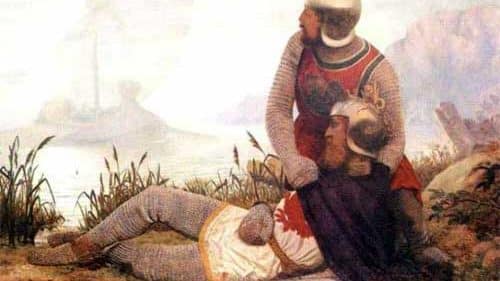
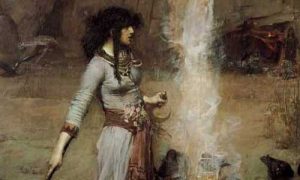
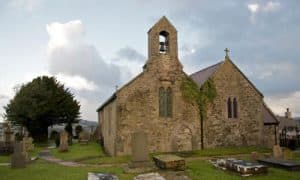
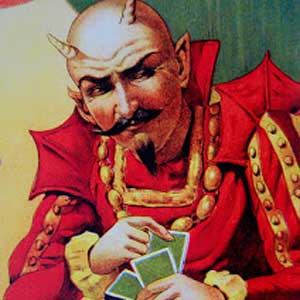
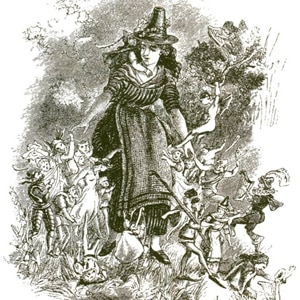

The poem Preiddeu Annwn is about a real event in Irish history. Briefly, it is a gaelic poet’s account of a raid by Welsh Normans led by “Arthur” (a cypher for his real name) on an abbey in the west of Ireland – seemingly a new Cistercian abbey – which was located within the ramparts of a pre-historic fortress that corresponds very well in location to the royal site labelled Regia Altera in Ptolemy’s map of Hibernia. They took a batch of manuscripts of legends and poetry – referred to as a “cauldron”. The narrating poet himself had poetry in the seized manuscripts.
This is territory in which the legendary pre-historic tribes – the Tuatha Dé Danann (who ultimately became the fairies of Irish folk-lore) – were once dominant. For this reason the poet calls the fortress Caer Sidi, i.e. “the fortress of the fairies”. The abbey evidently had an impressive amount of glass, contrasting with early gaelic monasteries, and also had a tower – “God’s Peak”. Cistercian life was hard, hence the reference to the “Fortress of Severity” (Caer Rigor), but the monks enjoyed mead-making, alluded to in the scornful term “Fortress of Drunkenness”. The monks are demeaned by the poet, and referred to as “little men”, their long loose-sleeved garb prompting the quip “slack their shield straps”. The legends were grabbed by a chain-mailed raider, the event condensed in the information that Gweir was imprisoned in chains. Etc. etc.